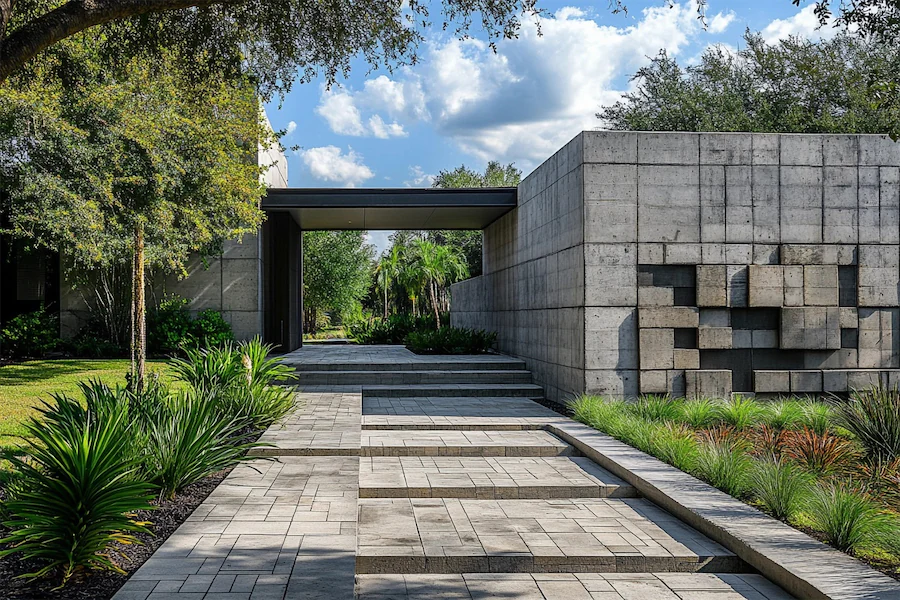Concrete block walls, also known as cinder block walls or concrete masonry unit (CMU) walls, are a staple in construction due to their durability, strength, and versatility. They are commonly used for foundations, retaining walls, partitions, and load-bearing structures.
Introduction to Concrete Block Walls
Concrete blocks are rectangular units made from cast concrete, typically comprising cement, sand, and gravel. These blocks may have hollow centers to reduce weight, improve insulation, and allow for the insertion of reinforcement materials. The standard size of a concrete block is 16 inches long, 8 inches high, and 8 inches wide, though variations exist to accommodate different construction needs.
History and Origins of Concrete Block Walls
The use of concrete blocks in construction dates back to the early 20th century, offering a more uniform and efficient alternative to traditional stone and brick masonry. Their modular nature facilitated faster construction times and reduced reliance on skilled labor. Over the decades, advancements in manufacturing processes and materials have enhanced the performance and applications of concrete block walls.
Key Features of Concrete Block Walls
- Strength and Durability: Concrete block walls provide robust structural support, capable of withstanding significant loads and environmental stresses.
- Fire Resistance: Concrete blocks are non-combustible, offering excellent fire resistance and contributing to the overall safety of a building.
- Thermal and Acoustic Insulation: The mass of concrete blocks provides sound dampening properties and, when combined with appropriate insulation, can enhance thermal performance.
- Design Flexibility: Available in various sizes, shapes, and finishes, concrete blocks can accommodate diverse architectural styles and functional requirements.
Construction of Concrete Block Walls
Building a concrete block wall involves several critical steps to ensure stability and longevity:
- Foundation Preparation: A solid, level footing is essential. The footing should be twice the width of the block wall and extend below the frost line to prevent shifting.
- Laying the Blocks: Blocks are laid in a running bond pattern, with each course offset from the one below. Mortar is applied between blocks to bond them together, and a level is used to maintain alignment.
- Reinforcement: For added strength, steel rebar can be placed vertically and horizontally within the block cavities, which are then filled with grout or concrete. This reinforcement is especially important in load-bearing or high-stress applications.
- Finishing: Once constructed, the wall can be finished with stucco, paint, or other coatings to enhance appearance and provide additional protection against the elements.
Applications of Concrete Block Walls
- Residential Construction: Used for foundations, basements, and exterior walls, providing a sturdy and long-lasting structure.
- Commercial and Industrial Buildings: Serve as load-bearing walls, firewalls, and partitions, meeting stringent safety and performance standards.
- Retaining Walls: Employed to hold back soil in landscaping and civil engineering projects, utilizing their strength and durability to prevent erosion.
Considerations When Choosing Concrete Block Walls
- Moisture Management: Proper waterproofing and drainage systems are necessary to prevent water infiltration, which can compromise the integrity of the wall.
- Insulation Needs: Concrete blocks alone have limited insulating properties; incorporating additional insulation materials can improve energy efficiency.
- Aesthetic Options: While functional, plain concrete blocks may lack visual appeal. However, decorative blocks and veneers are available to enhance the appearance of the wall.
Conclusion
Concrete block walls are a fundamental component in modern construction, offering a combination of strength, durability, and versatility. When properly designed and constructed, they provide reliable performance across a wide range of applications, from residential foundations to commercial edifices.
